Helios House Eco Homes
Integrating solar, energy storage and a heat pump, this new build low carbon house provides the homeowners with a low cost, eco-friendly lifestyle.
Generating more than
of clean energy per year
Implementing energy efficiency from the ground up

New build projects come in many forms, from one off new build homes to housing developments and large-scale commercial schemes.
One aspect that is consistent with all new build properties, however, is the potential for implementing smart energy technologies. Solar panels, battery storage, solar thermal (hot water), heat pumps and electric vehicle charge points are all effective options for reducing ongoing energy costs, ensuring environmental targets are met and improving the carbon footprint of your new development.
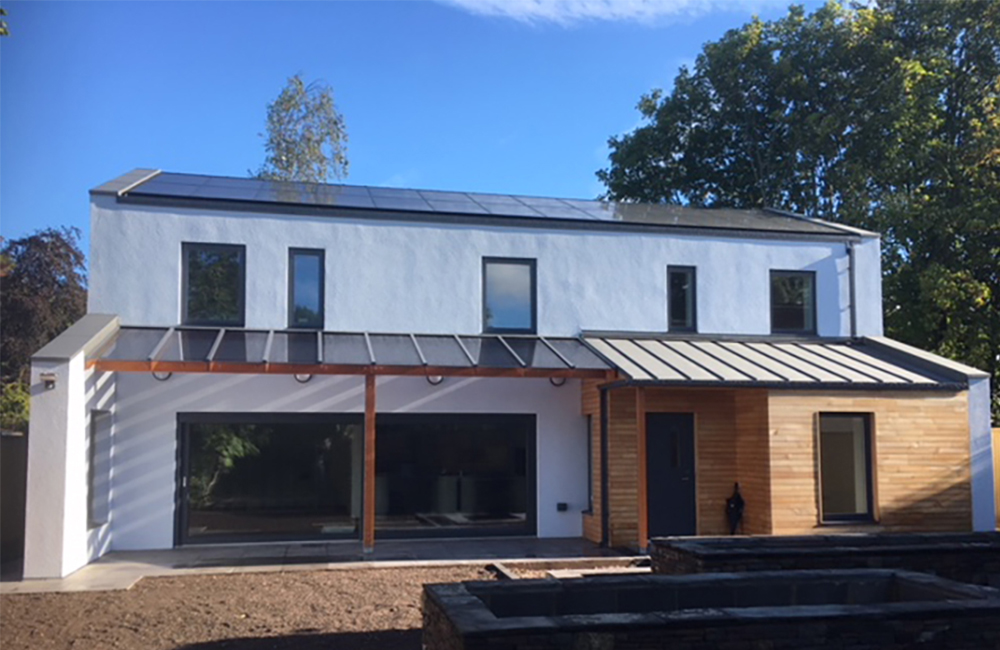
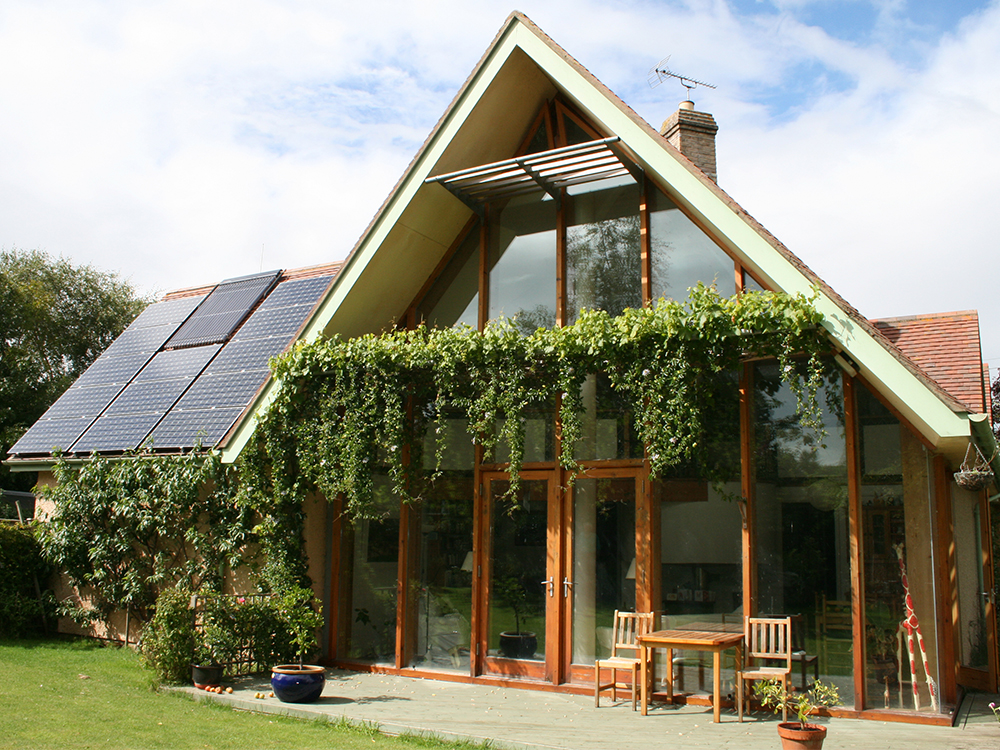
The financial and environmental benefits of renewable energy systems are well understood, and if you’re combining these in the build of a new property you have the perfect opportunity both to design the building to take maximum advantage of the cost-saving properties of these smart technologies and to go back to first principles and apply the ‘energy hierarchy’ to its full extent.
When planning a new build, a conscientious designer will consider these factors:
Modern building materials mean new houses can be extremely well insulated, which minimises energy loss, but how about the potential for energy gain?
Designing small windows into north-facing walls and large windows into south-facing walls will introduce considerable free solar energy into the building, and in some modern dwellings is the only source of energy required for space heating. Large windows create more natural light, which minimises dependency on electricity to power artificial lights; smaller living spaces have fewer drafts and are cheaper to heat; designing kitchen and bathrooms close to the hot water source means less heat loss through long pipe runs.
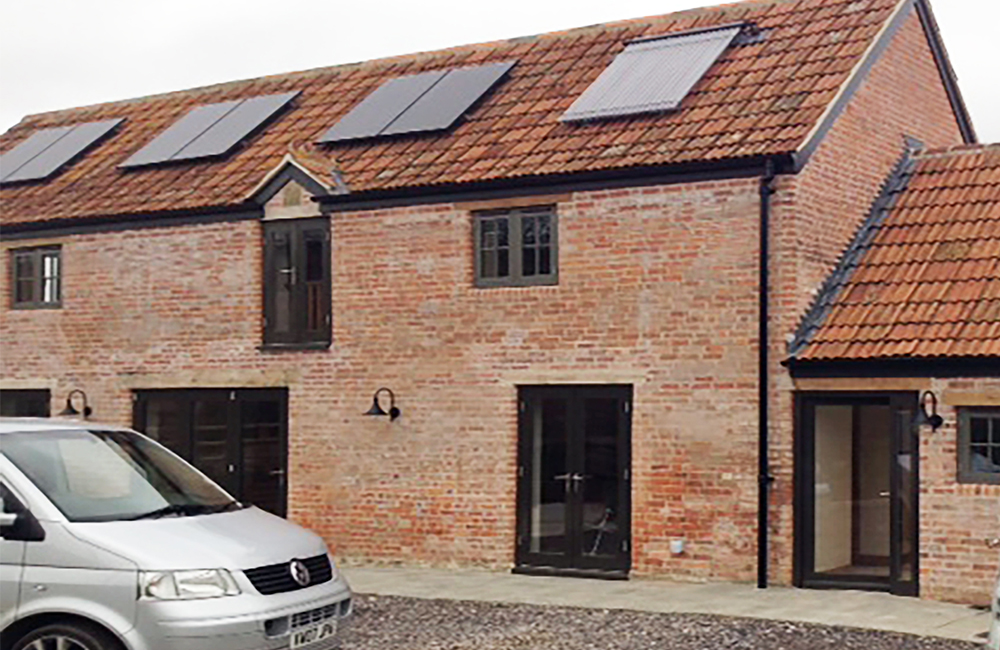
At Solarsense we often find new builds have been designed with renewable energy options added as an afterthought; failing to get the maximum from these smart technologies. There are many enduring benefits to examining the project – with renewable energy options – holistically.
Planning and implementing smart technologies from the beginning of a build offers a number of advantages. Combining smart technologies such as solar panels, battery storage and heat pumps is now common practice and offers a number of financial and environmental benefits.
Interpreting and understanding plans and specifications is second-nature to us. We have worked on a huge range of developments from industrial facilities and volume housing developments to single dwellings and landscape architecture installations. As a result, we understand buildings and will make the integration of renewable energy into any new building a harmonious process rather than a challenge.
Whether you are working on achieving a code for sustainable homes, BREEAM, Passivhaus, AECB or similar accreditation for your project, or trying to meet statutory requirements for on-site renewable energy generation, Solarsense will help you realise this in the most efficient manner. For more information please visit our architects and engineers page.
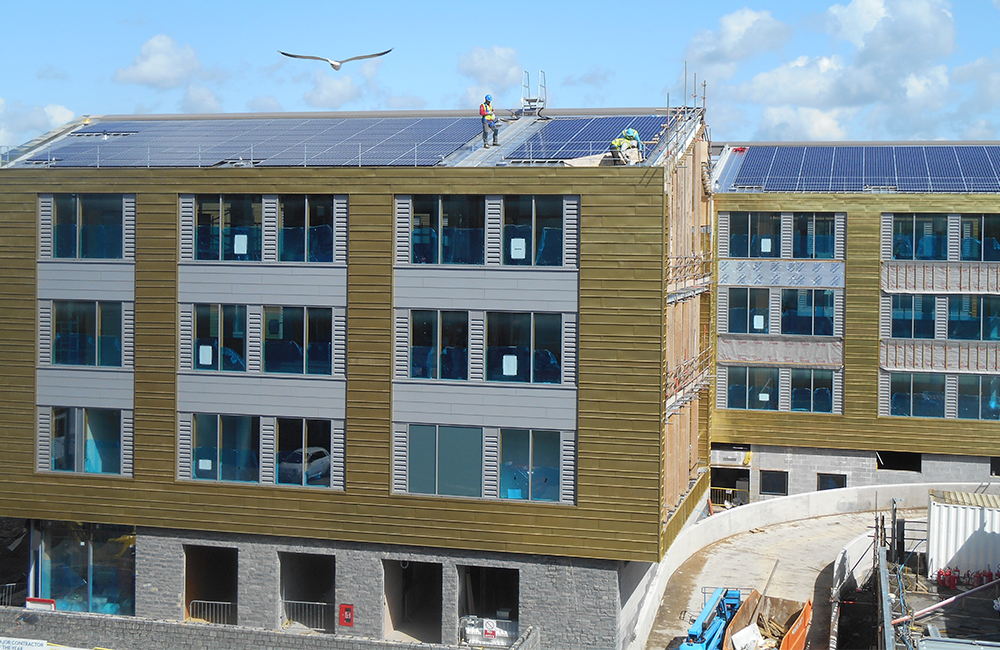
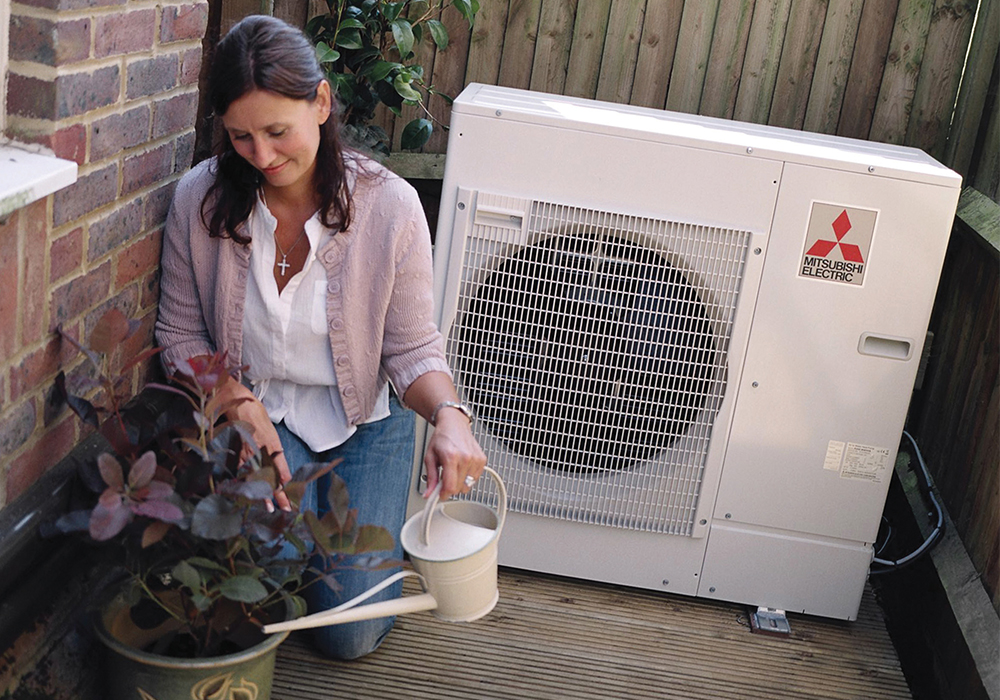
The UK Government’s Renewable Heat Incentive (RHI) was introduced in November 2011 and is due to end in March 2021. Under the RHI you are entitled to receive quarterly cash payments over seven years if you install an eligible renewable heating technology such as a heat pump (air source or ground source) or solar thermal (hot water) system. The RHI will reduce your payback period considerably and in some cases will cover the cost of installation.
The UK Government’s Feed-in Tariff (FIT) was closed for new applicants in April 2019. The FIT has reduced the cost of installing solar PV enormously and although there is no current subsidy for installing solar panels the return on investment is similar to before. For more information please visit our finance and incentives page.
Whether you are looking to combine a number of smart energy technologies to create a fully integrated sustainable solution or to install single smart technology such as a heat pump, solar panels or home battery, Solarsense has a team of in-house design engineers and project managers to assist you or your building professionals at all stages of your new build project.
We offer industry leading advice, rather than adopting a hard-sale approach and can offer guidance as to what technologies you should consider, the current incentives available and the likely payback period for your installation.
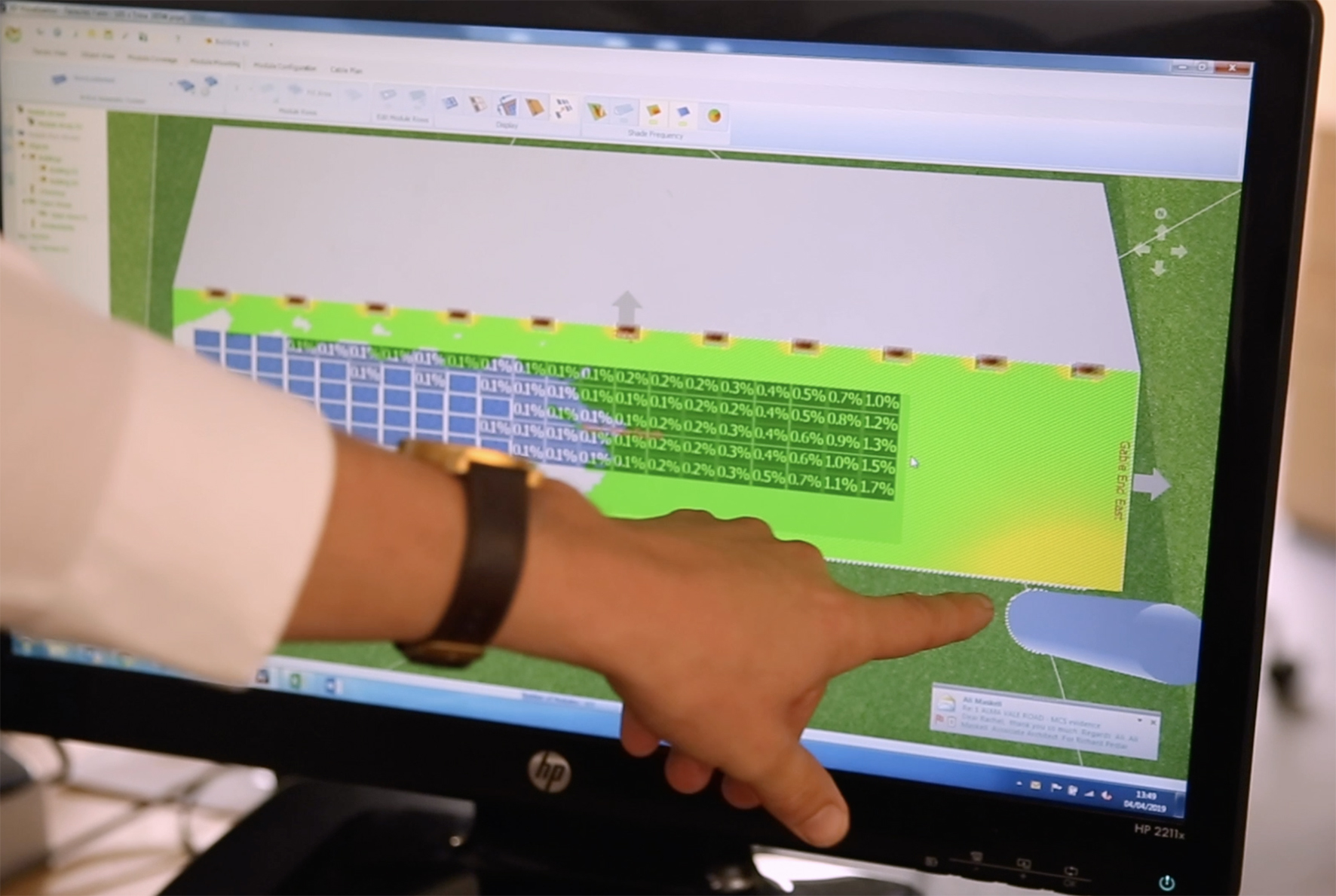
There are benefits to mixing different technologies. For example, combining a home battery with solar panels will create energy independence. Adding a solar thermal system will reduce summer use of a heat pump to almost zero. Installing an Apollo gem with solar PV will generate free hot water and more.
Smart energy systems pay for themselves; the payback period will depend on the technology and a variety of factors. A heat pump will save 30-40% over the running cost of an oil-fired boiler. A solar thermal system will provide around 70% of annual domestic hot water and solar panels generate free energy from the sun.
Integrated solar roofs are less obtrusive than traditional mounting systems and save on roofing materials. Discreet solar slates and tiles are available. Ground source heat pumps are buried out of sight. Air source heat pumps replace the need for oil tanks and fuel deliveries.
Solar panels are typically installed on-roof but can be ground-mounted. Solar batteries can be stored outside saving on space. Heat pumps are not as quiet as conventional boilers so are best installed outside and away from windows.
As well as helping to achieve targets and building regulations, low carbon technologies don’t release any harmful carbon dioxide or other pollutants, are much kinder to the planet and will significantly reduce your carbon footprint.
Maintenance costs for renewable energy systems are generally very low. We recommend that owners carry out a visual inspection each year and that our experts check them over once every five years.